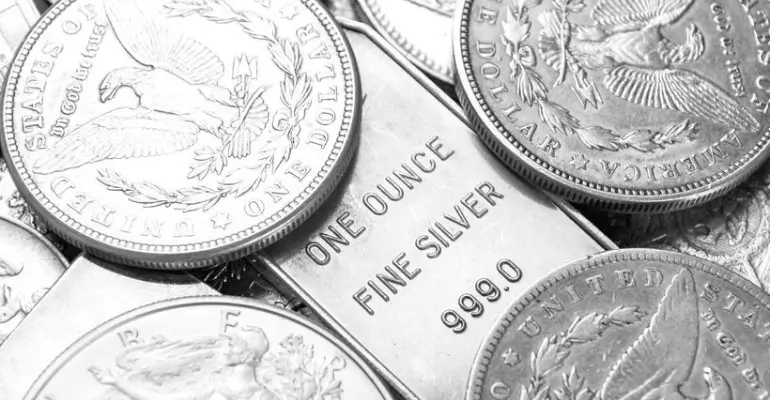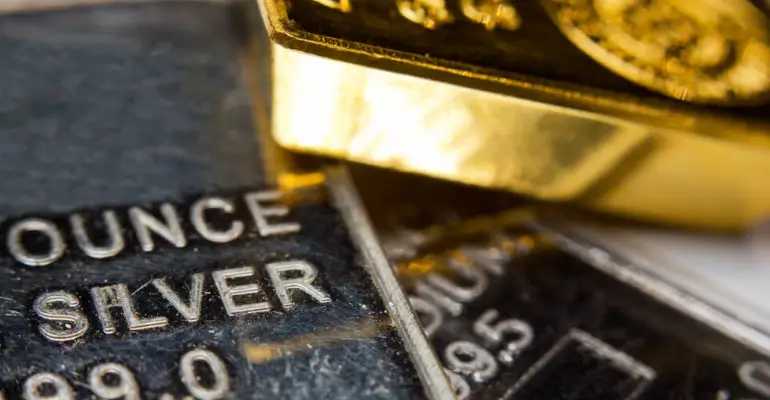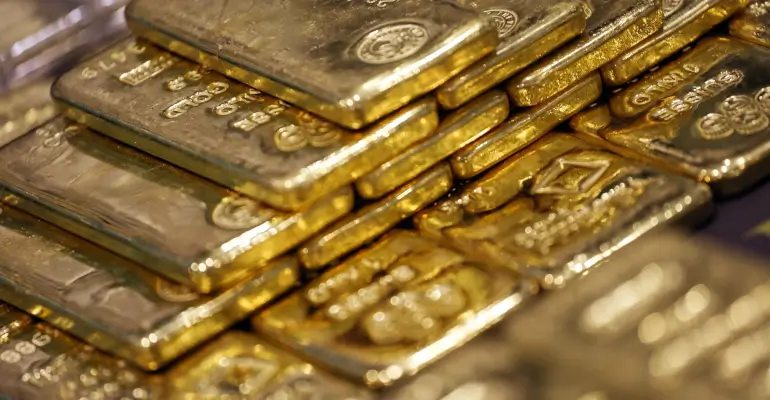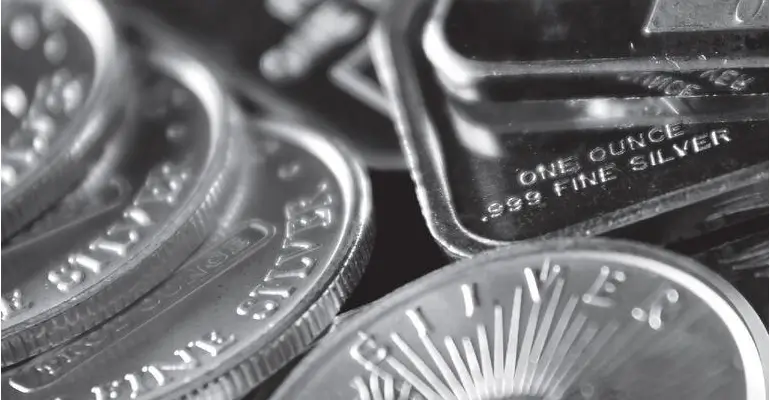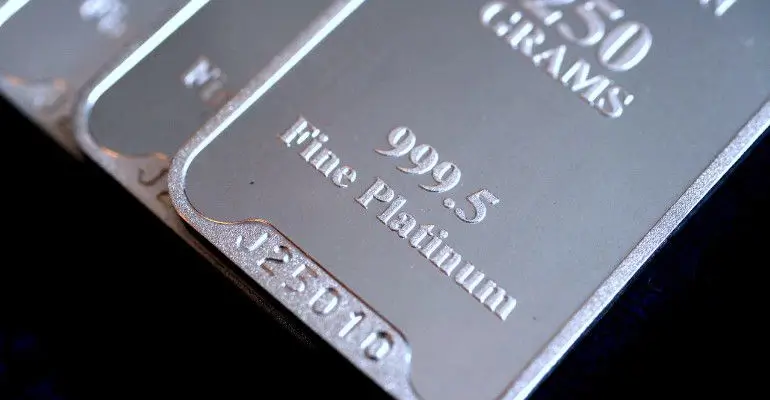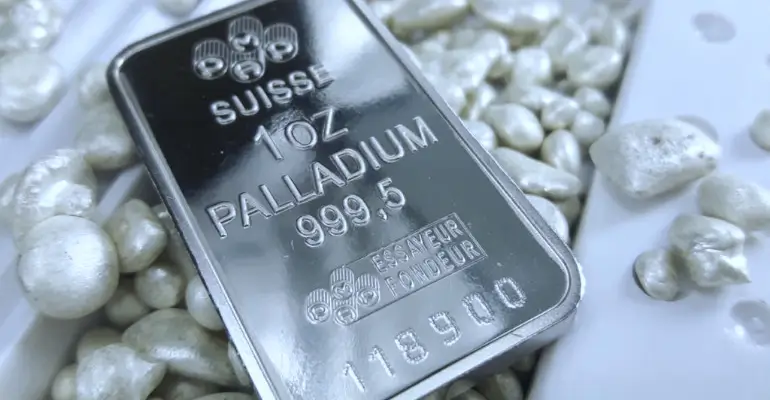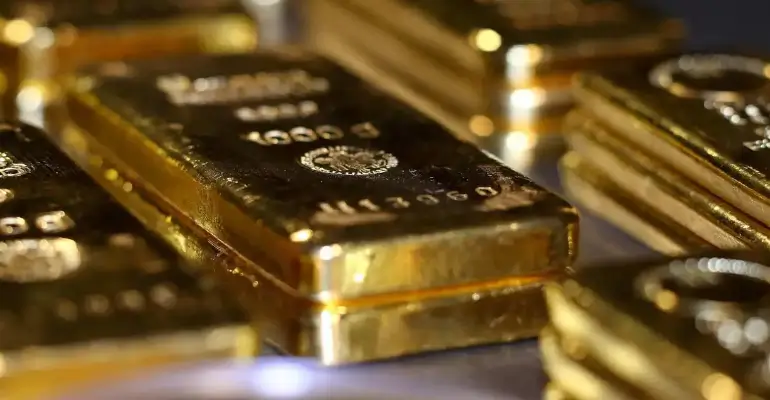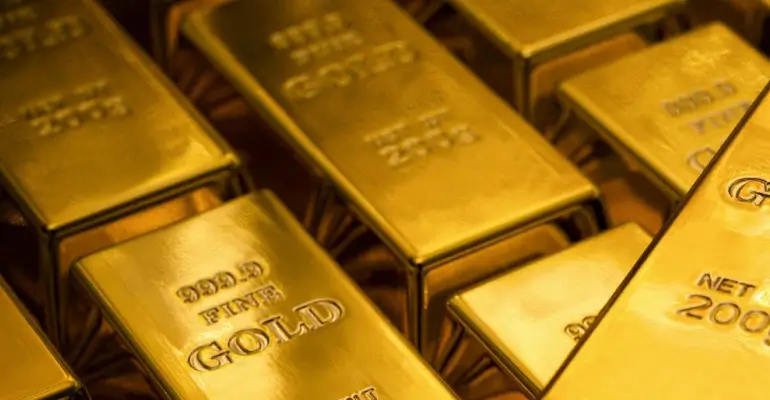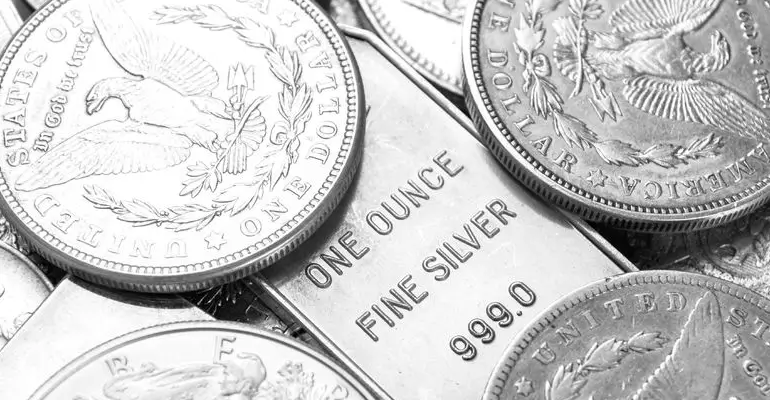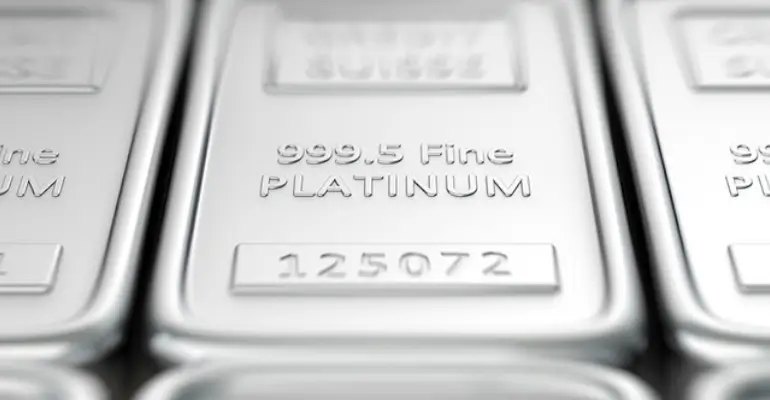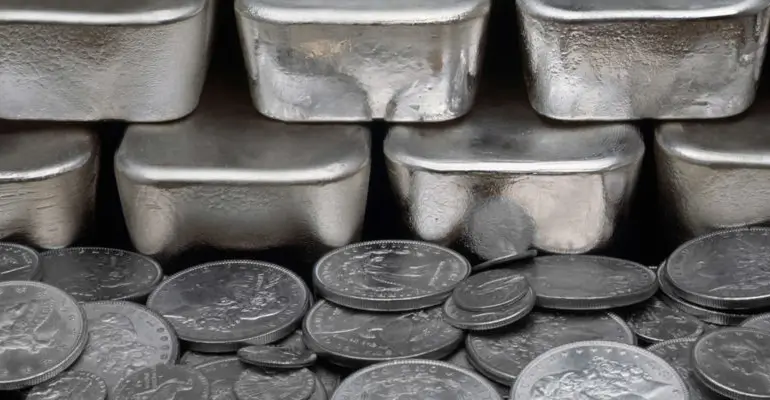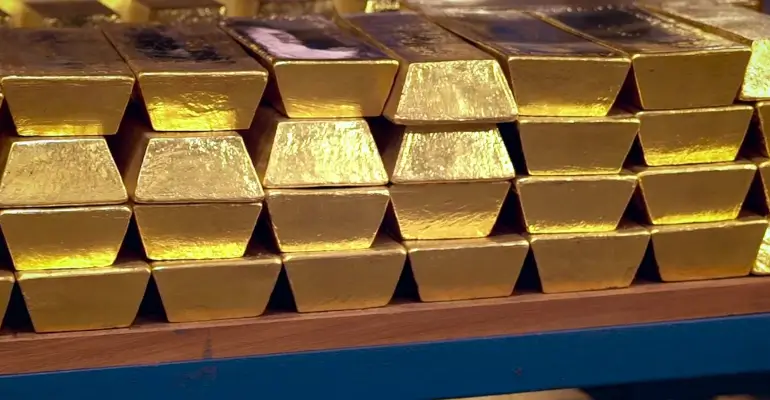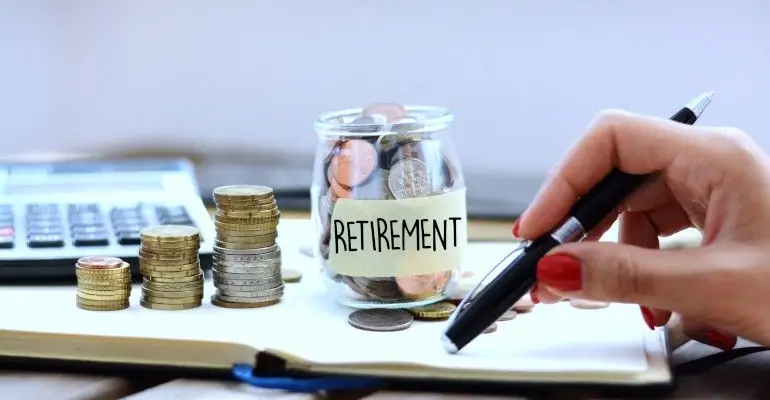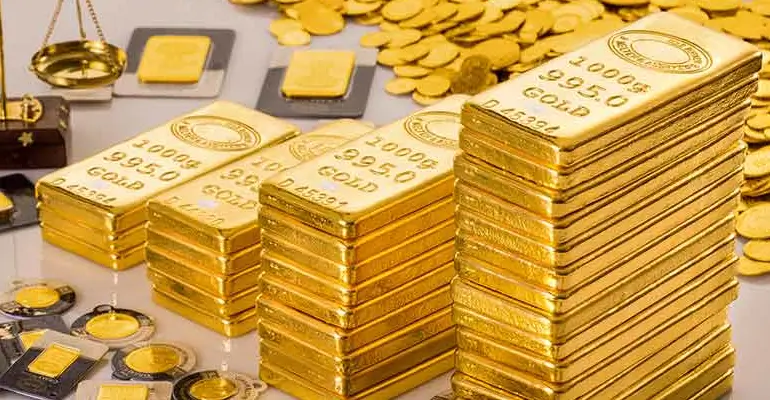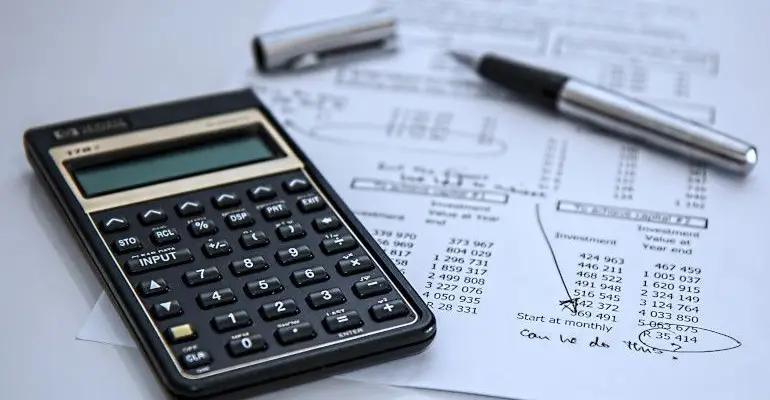Precious Metals Retirement Investing: IRAs, Rollover 401(k)
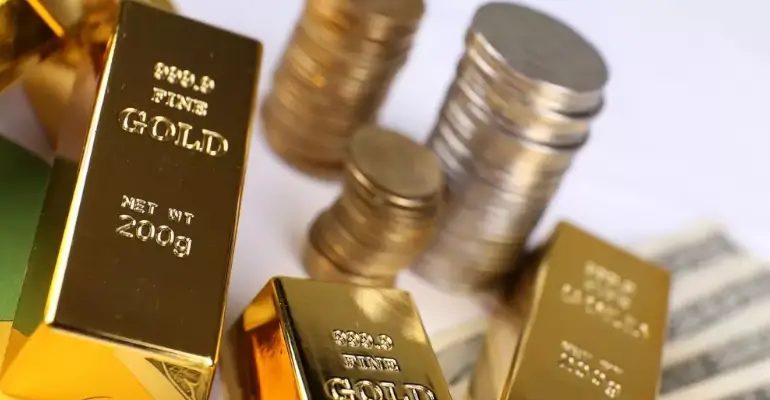
Integrating precious metals into a retirement portfolio can offer diversification and potential stability, particularly during economic downturns. Precious metals like gold, silver, platinum, and palladium have historically demonstrated resilience against market volatility and inflation. For investors seeking to include these assets in their retirement savings, there are various forms available, including coins, bars, and Exchange-Traded Funds (ETFs).
Investing in precious metals can be facilitated through several retirement accounts. Individual Retirement Accounts (IRAs) and 401(k)s are common options. Within these, specific precious metal IRAs, such as Gold IRAs and Silver IRAs, are tailored to cater to these types of investments. These accounts have unique features and compliance requirements which are crucial for investors to understand.
Precious Metals IRA
A Precious Metals IRA is a type of self-directed IRA allowing investment in physical precious metals. This account is subject to IRS regulations, including purity standards (e.g., gold must be 99.5% pure) and approved forms of metals like coins and bullion bars. To set up a Precious Metals IRA, one needs to select a custodian and find a dealer. Understanding the storage requirements and fees is vital. The average annual storage fees range from 0.5% to 1% of the account value, and setup costs typically fall between $50 to $150 across leading custodians.
Gold IRA
A Gold IRA, specifically focusing on gold investments, is valued for its diversification benefits and protection against economic volatility. Eligible forms of gold include American Eagle and Canadian Maple Leaf coins, bars, and bullion. Gold must be stored in a secure, IRS-approved depository. Historical trends show that gold prices have been influenced by various factors, including geopolitical events and global market trends.
Silver IRA
Silver IRAs allow investments in assets like American Silver Eagle coins and bullion bars. Silver tends to be more volatile than gold and must meet IRS purity standards of 99.9%. The market dynamics for silver prices are influenced by industrial demand, supply constraints, and investment trends. Historical price charts provide context for these dynamics.
Platinum IRA
Investing in platinum, known for its rarity and industrial uses, can be done through a Platinum IRA. This includes IRS-approved forms like Platinum American Eagle coins and certain platinum bars. The market performance of platinum is closely tied to industrial demand and mining output.
Palladium IRA
Palladium IRAs focus on investments in palladium, increasingly demanded in industries like automotive manufacturing. IRS guidelines specify eligible forms like Palladium American Eagle coins. The market for palladium has seen a surge in prices due to supply shortages and increasing industrial use.
Self-Directed IRA (SDIRA)
A Self-Directed IRA offers a broader range of investment options, including precious metals. It provides flexibility and control over investment choices, though it requires due diligence in understanding IRS rules. Setting up an SDIRA involves selecting a custodian experienced in non-traditional investments and understanding prohibited transactions.
Self-Directed SEP IRA
Tailored for small business owners and self-employed individuals, a Self-Directed SEP IRA allows investment in a wide range of assets, including precious metals. It offers higher contribution limits compared to traditional IRAs and requires strategic management to align with business goals and IRS regulations.
Self-Directed SIMPLE IRA
Designed for small businesses, a Self-Directed SIMPLE IRA offers flexibility in including precious metals among other assets. It requires understanding of contribution and matching requirements and strategic investment choices to balance traditional and alternative assets.
Self-Directed Roth IRA
A Self-Directed Roth IRA is characterized by tax-free withdrawals and is suitable for precious metals investing. It involves strategic considerations for long-term growth potential, balanced with tax benefits and withdrawal rules.
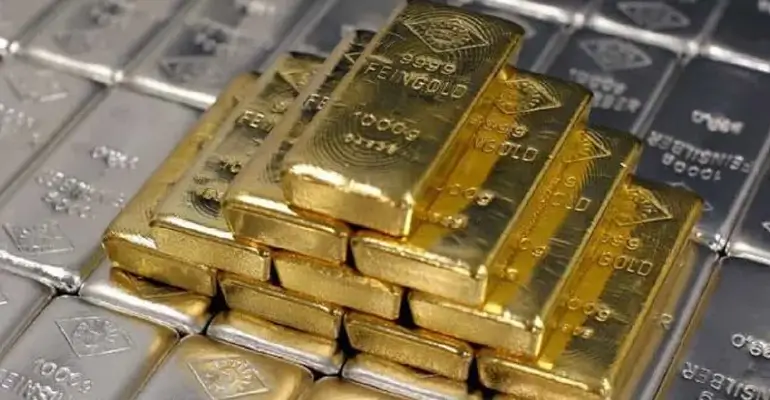
Rollover Retirement Account Into Precious Metals
Rolling over existing retirement accounts, like 401(k)s or traditional IRAs, into a Precious Metals IRA involves understanding eligibility criteria, timelines, and potential tax implications. The choice of a custodian and precious metals dealer is crucial, with considerations such as fees, reputation, and services offered. The benefits of such a rollover include diversification and potential long-term growth, despite the inherent market volatility of precious metals.
Traditional IRA Rollover
A Traditional IRA Rollover into a Precious Metals IRA requires adherence to IRS regulations for a tax-free transfer. This process involves selecting metals that meet IRS purity standards and considering market trends and investment objectives. The potential benefits include diversification and protection against inflation, offering a contrast to traditional IRA holdings in stocks and bonds.
Gold IRA Rollover
Starting the process in rolling over gold into your IRA entails managing paperwork, adhering to timelines, and ensuring IRS compliance to maintain tax-deferred status. Investors must thoughtfully select gold investments, considering forms and IRS compliance requirements. Understanding gold's market performance and future projections can aid in making informed decisions.
Silver IRA Rollover
A Silver IRA Rollover involves transferring funds from existing accounts to a Silver IRA, focusing on IRS guidelines and purity requirements. Silver's higher volatility and industrial demand are important considerations when selecting silver assets. Market analysis can provide insights into factors influencing silver prices.
Platinum IRA Rollover
For a Platinum IRA Rollover, understanding the transfer process, IRS regulations, and selecting platinum assets is key. Platinum's rarity and industrial uses influence its investment potential, with market trends and supply constraints playing a significant role.
Palladium IRA Rollover
In a Palladium IRA Rollover, compliance with IRS rules is critical. Selecting palladium investments requires considering its growing industrial use and rarity. The palladium market's recent price trends and supply-demand dynamics should inform investment choices.
Rollover 401(k)
Rolling over a 401(k) into a precious metals IRA involves understanding the differences between direct and indirect rollovers, tax implications, and choosing an appropriate custodian. This move can offer diversification and protection against inflation, contributing to long-term growth potential.
Gold 401(k) Rollover
A Gold 401(k) Rollover requires detailed knowledge of the rollover types, IRS compliance, and gold investment selection. Evaluating gold's historical performance and current market trends can help in assessing its suitability as a retirement investment.
Silver 401(k) Rollover
For a Silver 401(k) Rollover, understanding the transfer process, IRS guidelines, and differences in rollover options is essential. Investment considerations include silver's volatility, purity requirements, and market analysis of industrial and investment demand.
Platinum 401(k) Rollover
Executing a Platinum 401(k) Rollover involves complying with IRS regulations and selecting platinum assets based on their rarity and industrial applications. Market insights into platinum's price volatility and industry demand are crucial.
Palladium 401(k) Rollover
In a Palladium 401(k) Rollover, one must understand the transfer mechanics, IRS rules, and selection of palladium investments. Market analysis of palladium, considering its industrial demand and recent price trends, is vital for informed decisions.
Rollover Roth 401(k)
Rolling over a Roth 401(k) into a precious metals IRA involves nuances due to the post-tax status of Roth funds. Choosing suitable precious metals and understanding their potential growth, alongside tax-free withdrawals of Roth IRAs, are key considerations.
Rollover 403(b)
A 403(b) rollover into a precious metals IRA requires knowledge of transfer types, IRS compliance, and timelines. Selecting appropriate metals, considering the characteristics of 403(b) plans, and assessing the benefits and risks of such a transfer are crucial steps.
Rollover Thrift Savings Plan (TSP)
Rolling over a TSP into a precious metals IRA entails understanding TSPs' unique aspects, transfer methods, and IRS compliance. Choosing suitable precious metals for federal employees' retirement plans and assessing the advantages and challenges of such a rollover are important.
Precious Metals Solo 401(k)
A Precious Metals Solo 401(k) is designed for self-employed individuals and small business owners. Understanding contribution limits, tax advantages, eligibility criteria, and how to include precious metals in this plan is essential. Strategic considerations include balancing traditional investments with metals and understanding market trends.
Precious Metals Roth IRA
The characteristics of a Precious Metals Roth IRA include after-tax contributions and the ability to invest in physical metals. Key differences from traditional IRAs and investment strategies should be considered, focusing on diversification benefits and long-term growth potential.
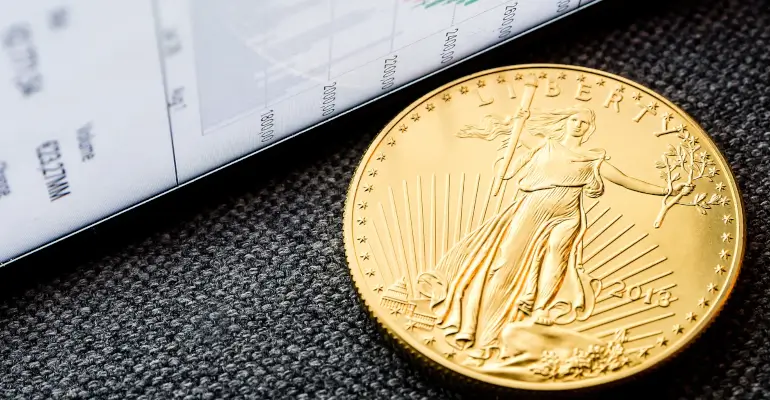
Why Include Precious Metals in Retirement
Including precious metals in a retirement portfolio can offer significant benefits such as diversification, protection against inflation, and historical resilience during economic downturns. Compared to traditional stocks and bonds, precious metals have demonstrated a stable performance, potentially contributing to long-term growth. They play a crucial role in risk management within a retirement portfolio due to their low correlation with traditional asset classes.
Precious Metals Allowed in Retirement Accounts
Retirement accounts permit a range of precious metals, subject to IRS regulations on purity and authenticity. Specific coins and bars that meet these standards can be included. Understanding these regulations, including purity requirements and approved mints, is vital. Incorporating these metals into retirement accounts requires compliance, careful storage, and custodian selection.
Gold Coins and Bars
Eligible gold coins and bars for retirement accounts include American Eagle and Canadian Maple Leaf coins, among others. The IRS standard of 99.5% purity is a critical criterion for investment choices. Factors like liquidity, storage costs, market premiums, and collectibility should be considered when choosing between gold coins and bars.
Silver Coins and Bars
Silver coins and bars eligible for retirement accounts must meet the IRS purity standard of 99.9%. Popular choices include American Silver Eagle coins and Canadian Maple Leaf coins. When investing in silver, considerations such as storage, liquidity, market demand, and premiums over spot prices are essential. The potential for growth and volatility in silver investments is significant, impacting retirement portfolios.
Platinum Coins and Bars
Platinum coins and bars approved for retirement accounts, like American Platinum Eagle coins, must meet a purity requirement of 99.95%. The investment characteristics of platinum, including its rarity and industrial demand, influence the decision between coins and bars. The market dynamics affecting platinum prices, such as supply challenges and technological advancements, impact its investment potential.
Palladium Coins and Bars
Palladium coins and bars eligible for retirement investments include American Palladium Eagle coins, adhering to the 99.95% purity standard set by the IRS. Considering palladium's industrial demand, particularly in automotive manufacturing, is crucial for investment decisions. Evaluating palladium as an investment choice involves assessing its recent market performance and supply constraints.
Rollovers vs Transfers
Understanding the differences between a rollover and a transfer is essential in managing retirement accounts. Each has specific processes, timelines, and tax implications. In the context of precious metals IRAs, the rules governing direct and indirect rollovers, as well as trustee-to-trustee transfers, are key. Strategic considerations include tax efficiency, investment continuity, and IRS compliance.
Roth vs Traditional IRAs
Comparing Roth and Traditional IRAs reveals differences in tax treatment, withdrawal rules, and eligibility criteria. These differences impact the decision to invest in precious metals, affecting after-tax returns and long-term investment strategies. Deciding between Roth and Traditional IRAs for precious metals investment involves evaluating individual financial goals and tax situations.
Tax Benefits of Precious Metals in Retirement
Investing in precious metals within retirement accounts offers tax advantages like tax-deferred growth in Traditional IRAs and tax-free growth in Roth IRAs. Understanding specific tax rules applicable to precious metals, such as capital gains tax and distribution taxation, is crucial. Strategic planning can maximize tax benefits, considering factors like holding periods and account types.
Storage of Precious Metals in Retirement Accounts
The storage of precious metals in retirement accounts requires adherence to IRS-approved depository standards and security measures. The costs associated with storage, including depository fees and insurance, can impact investment returns. Investors face choices between segregated and non-segregated storage, each with implications for asset security and liquidity.
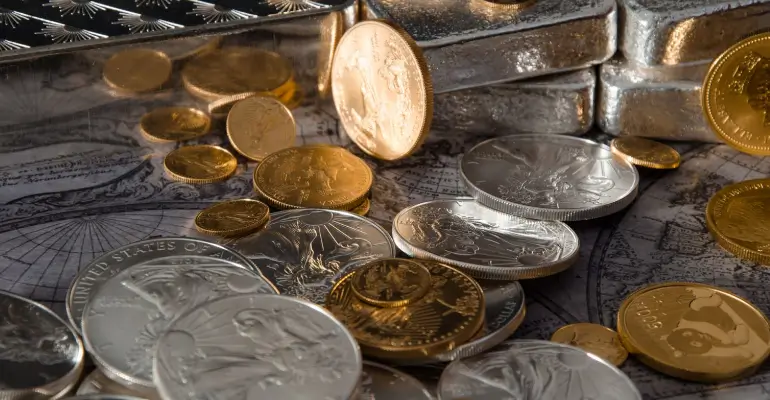
Retirement Investment Strategies in Precious Metals
Effective strategies for including precious metals in retirement portfolios focus on diversification, allocation percentages, and long-term growth potential. Timing and market conditions favorable for investing in precious metals, such as inflation rates and global economic trends, are critical considerations. Balancing investments in precious metals with other asset classes involves assessing risk tolerance, investment horizon, and retirement goals.
Allocation Across Different Metals
When allocating investments across different precious metals (gold, silver, platinum, palladium) in a retirement portfolio, understanding each metal's unique characteristics and market performance is crucial. Historical performance and correlation with traditional asset classes aid in determining optimal allocation ratios. Global economic factors, such as industrial demand, geopolitical events, and supply constraints, significantly impact the performance of various precious metals.
Rebalancing Portfolio
Rebalancing a retirement portfolio that includes precious metals is essential to maintain desired asset allocation and risk levels. The frequency and triggers for portfolio rebalancing should consider market-driven changes in asset values and shifts in the investor's risk tolerance or investment horizon. Strategies for rebalancing can involve using dividends or new contributions to adjust asset allocations, with attention to the tax implications in different types of retirement accounts.
Dollar-Cost Averaging
Dollar-cost averaging is a strategy for investing in precious metals, where regular, fixed-amount investments help mitigate the impact of market volatility. This approach reduces the risk of timing the market and evens out purchase prices over time. Implementing dollar-cost averaging in a precious metals retirement account involves considering investment frequency, budgeting, and adjusting the strategy based on market conditions and investment goals.
Tax Considerations Before Investing
Understanding tax considerations when investing in precious metals within retirement accounts is crucial. This includes capital gains tax, distributions, and IRS reporting requirements. The impact of different retirement account types (Traditional IRA, Roth IRA, 401(k)) on the taxation of precious metals investments, such as tax-deferred and tax-free growth scenarios, is significant. Strategies for tax-efficient investing in precious metals should minimize tax liabilities and consider the tax implications of buying and selling metals.
Global Factors Impacting Precious Metals
Global economic and political factors significantly influence precious metals' prices and demand. These include geopolitical tensions, economic policies, and global trade dynamics. The impact of central bank policies, currency fluctuations, and international market trends on precious metals' performance is noteworthy. Global events like economic crises, technological advancements, and environmental concerns also affect precious metals investments.
Inflation vs Precious Metals
The relationship between inflation and precious metals performance is notable, with metals like gold and silver historically serving as hedges against inflation. Understanding how precious metals maintain value during high inflation, including supply constraints and demand dynamics, is key. Case studies of past inflationary periods provide practical insights for investors.
Central Banks vs Precious Metals
Central bank policies, such as interest rate adjustments and gold reserves management, play a significant role in influencing precious metal markets. The actions of central banks, both domestically and internationally, can affect the valuation and investment appeal of precious metals. Historical instances where central bank policies impacted prices and demand offer lessons for current and future investors.
Interest Rates vs Precious Metals
The relationship between interest rates and precious metal investments is complex, with changes in interest rates influencing the attractiveness of metals like gold and silver. The inverse relationship typically seen between interest rates and precious metal prices, such as the opportunity cost and investor sentiment, is crucial for understanding market reactions to interest rate changes. Interest rate cycles and their effects on precious metal markets aid investors in anticipating market responses.
Precious Metals vs Other Investment Options in Retirement
Comparing precious metals investments with other common retirement options like stocks, bonds, and real estate involves evaluating risk profiles, potential returns, and liquidity. Precious metals play a unique role in a diversified retirement portfolio, particularly during stock market downturns and inflationary periods. Their tangibility, global market influence, and lack of correlation with traditional financial assets can benefit retirement planning.
Risks of Investing in Precious Metals
Investing in precious metals involves understanding the associated risks, such as market volatility, pricing fluctuations, and the potential impact of economic and geopolitical events. Liquidity risk in precious metals investing considers factors like market demand and liquidation costs. Additionally, risks related to the storage and insurance of physical precious metals, including security risks and storage costs, must be addressed.
Avoiding Precious Metals Retirement Scams
Navigating the realm of precious metals retirement investing requires vigilance against precious metal scams. Key red flags include high-pressure sales tactics, unrealistic return promises, and lack of transparency. Conducting thorough due diligence on dealers and custodians, checking credentials, customer reviews, and fee structures is essential. Awareness of legal and regulatory aspects, such as IRS rules and reporting requirements, offers protection and recourse in case of fraudulent activities.
Top Retirement Accounts
Exploring popular retirement accounts for precious metals investing reveals a variety of options, including Traditional IRAs, Roth IRAs, 401(k)s, and Self-Directed IRAs. Each account type has distinct features and suitability for different investor profiles. Understanding their contribution limits, tax benefits, withdrawal rules, and investment options aids in informed decision-making. Strategic use of these accounts for precious metals investing involves optimizing them based on individual financial goals and tax situations.
IRA vs 401(k)
Comparing IRAs and 401(k)s in the context of precious metals investing involves evaluating aspects such as tax treatment, contribution limits, and investment flexibility. Each account type has its pros and cons for precious metals investments, including considerations for self-directed options and implications of early withdrawals and required minimum distributions. Practical advice for choosing between an IRA and a 401(k) hinges on factors like employment status, income level, and retirement planning objectives.
TSP Vs 401(k)
The comparison between the Thrift Savings Plan (TSP) and 401(k) plans, especially regarding precious metals investing, highlights differences in contribution limits, investment choices, and management fees. The advantages and limitations of each plan for federal employees and private sector workers are significant, particularly in the context of precious metals investments. Strategic considerations for federal employees include retirement timelines, tax implications, and investment goals.
Gold IRAs vs Gold ETFs
Analyzing Gold IRAs versus Gold Exchange-Traded Funds (ETFs) involves examining aspects like physical ownership, storage and insurance, tax implications, and liquidity. Each investment option has its pros and cons, focusing on long-term growth potential, ease of trading (for ETFs), and the tangible asset aspect of Gold IRAs. Guidance on choosing between the two depends on individual investment objectives, risk tolerance, and preferences for physical ownership versus paper investments.
Precious Metals vs Real Estate in Retirement IRA
Investment analysis between real estate and precious metals in retirement planning covers market volatility, potential returns, liquidity, and tax benefits. The diversification benefits and risks of both asset classes are crucial, with real estate offering potential rental income and appreciation, versus the historical stability and inflation hedge provided by precious metals. Balancing these two in a retirement portfolio requires strategic consideration of personal investment goals, risk tolerance, and market conditions.
Real Estate IRAs
Diversifying with Real Estate IRAs can offer one more avenue to invest in different options.
Can I Have Both a 401(k) and a Roth IRA?
Understanding the compatibility of 401(k) plans and Roth IRAs in a retirement strategy is vital, including eligibility, contribution limits, and tax implications of investing in both accounts. The benefits of diversifying retirement savings with a 401(k) and a Roth IRA include tax diversification and potential for higher combined contribution limits. Optimizing retirement savings involves leveraging the strengths of both accounts, considering factors like employer matching in 401(k)s and tax-free withdrawals in Roth IRAs.
Choosing a Financial Advisor for Retirement Planning
Selecting a financial advisor for retirement planning requires focusing on credentials, experience, fiduciary responsibility, and familiarity with precious metals investments. Evaluating an advisor's approach, investment philosophy, fee structure, and ability to tailor advice to individual retirement goals is critical. Assessing their track record, client testimonials, and regulatory history ensures credibility and suitability for managing retirement investments, including those in precious metals.
Required Minimum Distributions (RMDs) for IRAs and 401(k)s
Understanding Required Minimum Distributions (RMDs) for IRAs and 401(k)s is crucial, including rules, calculation methods, and deadlines. The implications of RMDs on precious metals investments, such as liquidating metals to meet RMD requirements and potential tax impacts, are significant. Effective management strategies for RMDs include using them for rebalancing portfolios, exploring alternatives like Roth IRA conversions, and planning for tax-efficient withdrawals.
Asset Allocation in Retirement Investing
Asset allocation in retirement investing emphasizes the importance of a diversified portfolio that includes stocks, bonds, precious metals, and other assets. Determining an appropriate asset mix based on individual risk tolerance, investment horizon, and retirement goals is key, including the role of precious metals. Adjusting asset allocation over time considers changing market conditions, life events, and shifts in risk appetite, focusing on maintaining balance and pursuing long-term retirement objectives.
How Long Will $500K Last in Retirement?
Understanding how long $500K will last in retirement involves analyzing factors such as retirement age, lifestyle expenses, inflation rates, and investment returns. Various scenarios demonstrate the potential longevity of a $500K retirement portfolio under different conditions, including conservative versus aggressive investment strategies and the inclusion of precious metals in the portfolio. Strategic retirement planning techniques can extend the lifespan of a $500K portfolio, focusing on efficient budgeting, diverse investment approaches, and controlled withdrawal rates.
Can You Retire With $1 Million?
The feasibility of retiring with $1 million depends on factors like retirement age, expected lifestyle, healthcare costs, and inflation. Case studies illustrate different retirement scenarios with a $1 million nest egg, varying in investment strategies, withdrawal rates, and external economic influences. Effective retirement planning for a $1 million fund encompasses diverse investment strategies, efficient budgeting, potential income streams, and continuous financial planning, including the role of precious metals.
Discover How to Effortlessly Rollover Gold Into Your IRA
Our free eBook covers everything you need to know before you start diverisfying your retirement with gold.
Disclaimer: Content on this website is not intended to be used as financial advice. It is not to be used as a recommendation to buy, sell, or trade an asset that requires a licensed broker. Consult a financial advisor.



